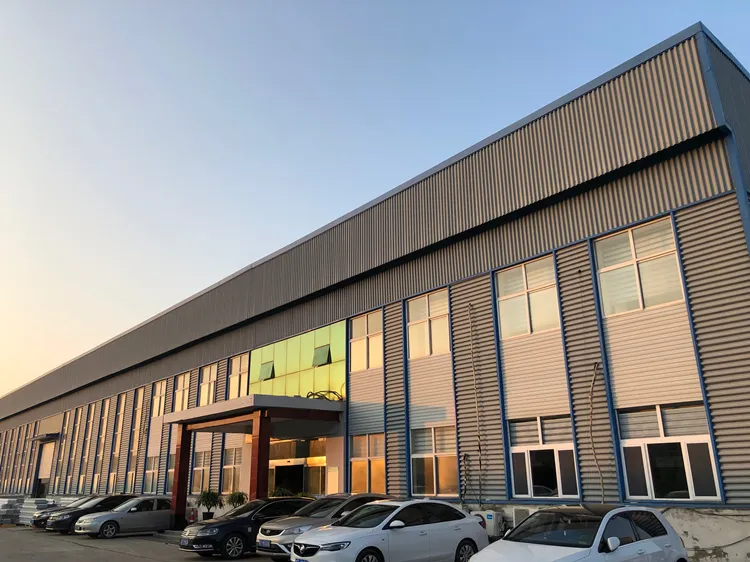loading...
- No. 9, Xingyuan South Street, Dongwaihuan Road, Zaoqiang County, Hengshui, Hebei, China
- admin@zjcomposites.com
- +86 15097380338
- Welcome to visit our website!
Exploring the Benefits and Applications of FRP Railing Systems in Modern Construction
The Evolution and Importance of FRP Railings in Modern Architecture
In the ever-evolving world of architectural design, the materials used to construct buildings and their components play a crucial role not only in aesthetics but also in safety and durability. Among the plethora of materials available, Fiber Reinforced Polymer (FRP) has emerged as a game-changer, especially concerning railings in both residential and commercial buildings. This article delves into the significance of FRP railings, their advantages, and the impact they have on modern architecture.
Understanding FRP
Fiber Reinforced Polymer, or FRP, is a composite material made of a polymer matrix reinforced with fibers, typically glass, carbon, or aramid. This unique composition gives FRP its impressive properties, including high strength-to-weight ratios, corrosion resistance, and design flexibility. These characteristics make FRP a preferred choice for a variety of applications, one of which is railings.
Advantages of FRP Railings
1. Durability and Maintenance One of the standout benefits of FRP railings is their exceptional durability. Unlike traditional materials such as wood or metal, FRP does not rot, warp, or corrode. This resilience allows FRP railings to withstand harsh weather conditions, making them an ideal choice for coastal areas or regions with high humidity. Additionally, FRP requires minimal maintenance, which translates to lower long-term costs for property owners.
2. Safety Features Safety is paramount in architectural design, especially for railings that prevent falls from heights. FRP railings can be engineered to meet stringent safety standards. Their lightweight yet robust structure provides both strength and flexibility, reducing the risk of injury in case of accidental impacts. Furthermore, FRP can be crafted to include non-slip surfaces, enhancing user safety even in wet conditions.
frp railing

3. Aesthetic Versatility Architects and designers are increasingly drawn to FRP for its versatility in aesthetics. FRP railings can be molded into various shapes and finished in an array of colors, allowing them to seamlessly blend into architectural styles or stand out as a design feature. Whether used in residential decks, commercial buildings, or public spaces, FRP railings can complement the overall design scheme effortlessly.
4. Environmental Considerations In an age where sustainability is at the forefront of construction practices, FRP materials shine due to their potential for reduced environmental impact. Many FRP products are made from recycled materials, and the longevity of these railings means less waste over time. Furthermore, the manufacturing process of FRP is often less energy-intensive than that of traditional materials, contributing to a lower carbon footprint.
Applications of FRP Railings
The application of FRP railings spans a wide spectrum of environments. In residential settings, they are frequently used in balconies and patios, offering both security and style. In commercial properties, FRP railings can be found in staircases, walkways, and decks, providing safe passage for employees and visitors alike. Moreover, public infrastructures such as parks and transportation hubs benefit from FRP railings due to their resilience against vandalism and low upkeep.
Conclusion
FRP railings represent a fusion of innovative material science and practical application in architectural design. Their advantages—durability, safety, aesthetic versatility, and environmental sustainability—make them a superior choice in today’s construction landscape. As more architects and builders recognize the benefits of incorporating FRP into their designs, it is likely that the prevalence of these railings will continue to grow, shaping the future of safe and sustainable architecture. In a world increasingly focused on resilience and durability, FRP railings stand out as a material poised to meet the needs of modern society while enhancing the beauty and functionality of our built environments.
-
Transform Your Spaces with FRP Grating SolutionsNewsNov.04,2024
-
The Versatility and Strength of FRP RodsNewsNov.04,2024
-
The Excellence of Fiberglass Water TanksNewsNov.04,2024
-
The Benefits of FRP Grating for Your ProjectsNewsNov.04,2024
-
Elevate Your Efficiency with FRP Pressure VesselsNewsNov.04,2024
-
Welcome to the World of FRP Pressure VesselsNewsOct.12,2024
-
Unveiling the Future of Filtration: Why FRP Filter Vessels are a Game ChangerNewsOct.12,2024
